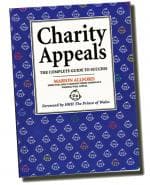Anatomy of the Wishing Well Appeal. Part 1.
- Written by
- Marion Allford
- Added
- January 25, 2010
The overall fundraising strategy.
Even appeals for such emotive causes as children's hospitals have been known to fail by using the wrong strategy or, worse, no strategy. This was why Great Ormond Street Hospital (GOSH) recruited me, as an experienced capital appeal director, to plan and execute its major campaign. In this article, I'd like to share some of the key lessons I have learned.
Seven key appeal success factors
- A compelling and convincing case for support
- A list of essential and specific needs to be funded
- Sufficient sources of support to attain the target
- The correct strategy
- Strong and inspiring leadership
- Internal readiness to build up a new fundraising initiative
- A realistic timeframe for the appeal
Appeal phases
There are four main parts to a classic capital appeal:
- Research and planning.
- The private appeal.
- The public appeal.
- The consolidation phase.
Research and planning phase
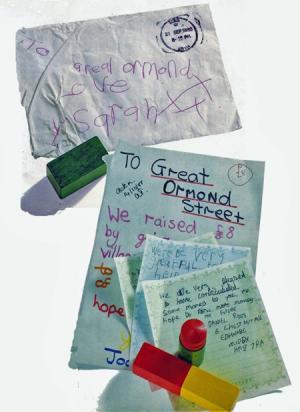
There's a lot of preparatory homework to be done before the first volunteer is recruited, the first donor identified and the first pound is raised. Before embarking upon a capital appeal any fundraising organisation has to ask itself a number of crucial questions. These are set out in detail in the BROADSWORD list. This list comes from my book 'Charity Appeals: The Complete Guide to Success'.
Making the case
Careful planning is absolutely essential. Remember, failing to plan is planning to fail! Appeals that rush the preparation of fundraising are usually the ones that flounder. A strong case for support is critical. It must be written clearly and concisely and answer all the questions major donors will ask.
Don't forget 'seeing is believing'. To prove Great Ormond Street really needed a new building, the hospital was able to show potential donors the broken staircase in the old building. Some heavy equipment had been dropped and had fallen straight through two levels of the staircase. The appeal office was pleased to find the stairs left in this state, cordoned off, as dramatic proof of the need for new facilities.
Prospect research
For Great Ormond Street's appeal, detailed prospect research (mainly carried out by volunteer, professional people) identified potential donors as:
- Grateful parents (based all over the UK and around the world)
- Grant-making trusts (many of which give to the cause of sick children)
- Companies (attracted by the high profile brand and a beneficial association)
- The general public (many of whom had family members or friends with a reason to be grateful to the hospital).
The private and public appeals
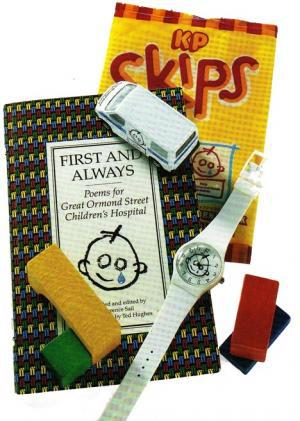
There is not enough space here to do more than sketch the merest outline of the strategy and all the many activities that delivered the staggering results achieved by the Wishing Well Appeal teams.
The key strategy was to attract major gifts first, through personal approaches, donor to donor, to launch a public appeal backed by wide publicity and to ensure that, from then on, the appeal maintained a high profile for at least a year (although we had allowed for two years, if necessary).
The reason behind a private phase of the appeal is to ensure that at least half to two thirds of the target is raised before the public phase (the level depends on the emotiveness of the cause). This is to make sure the appeal is a success from the start, as people love to support success. It also avoids what some fundraisers call 'vaccination', when an unsolicited donor will give a fraction of what would probably have been forthcoming if he or she had been approached by the right person, in the right way, at the right time.
Every kind of fundraising method was used during the public appeal. The publicity campaign comprised a major advertising campaign, sponsored by a major British bank. In addition there was widespread coverage in the press, on radio and television, in cinemas, on posters, buses and the underground. This was sustained for the duration of the public phase of the appeal. In most cases, this publicity was achieved at no cost to the appeal.
A joint promotion raised £5m from corporate partnerships, many initiated by a promotions agency working at minimal cost to the appeal. Corporate support included sponsoring events, adopting the appeal as their cause of the year and seconding employees in order to encourage and support all their staff to raise more for the appeal. In the first joint promotion, 40 million Mars bar wrappers were adorned by the 'teardrop' logo and Tesco raised £2m by involving their customers, suppliers and staff in their fundraising activities.
A publishing panel developed deals with authors and numerous books were published to benefit the appeal.
The appeal office set up 90 regional groups in the six months before the appeal by consulting the Lord Lieutenant (the Queen's representative) in each of the counties that send patients to Great Ormond Street. The Lieutenants' involvement ensured that the appeal was able to recruit strong leadership for each group and that their plans were well prepared before their fundraising started. The appeal office supplied the regional groups with all the marketing materials and guidance they needed.
A substantial trading operation was linked to the appeal, with a wide range of products for sale, some through outlets such as Harrods and Allders. The appeal developed character licensing and Walt Disney produced a cartoon character called Mr Wishing Well. Stars from the world of pop released the 'Wishing Well song', which reached the charts and raised funds. A racehorse was named Mr Wishing Well to help promote the appeal. Some of the most touching enthusiasm for fundraising came from children themselves, who raised thousands of pounds through participating in school events and a plethora of sponsored activities.
The consolidation phase
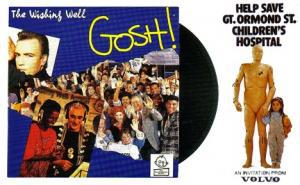
The public appeal was followed by a consolidation phase, to collect final gifts, to celebrate the success of the appeal and – most importantly – to thank all concerned appropriately. Finally, the 'warm' donor base, which was the legacy of the appeal, was to form the basis of an on-going fundraising department to ensure the hospital had the funds to remain a state-of-the-art institution.
Appeal timing and organisation
The whole process of building, running and consolidating the appeal took four years, though from start to finish was even longer, from the decision to launch the appeal in 1983 to the service of thanksgiving in Westminster Abbey to mark its success, in mid-1989.
The cause was about as emotive and compelling as it gets: sick children. The Wishing Well Appeal benefited in so many ways from the support of the influential and powerful people involved. The leadership was, as normal, vested in the charity's trustees but, for this appeal, a special honorary structure was established under the chairmanship of a former government minister, Lord James Prior. (See illustration for the honorary appeal structure.)
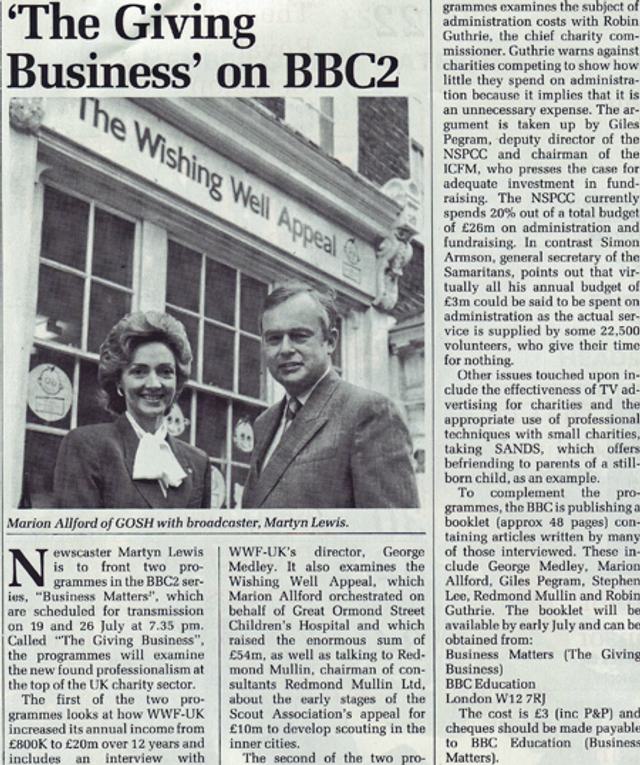 View original image
View original image
The royal patrons of the appeal were their Royal Highnesses The Prince and Princess of Wales, who spearheaded an impressive group. Church leaders, the Lord Mayor of London and medical luminaries were vice-presidents. The six vice-chairs were all prominent individuals who each made a major contribution; the honorary treasurer was chairman and group chief executive of one of the UK's top four banks. Strong and effective leadership is one of the most critical success factors of an appeal.
Two major donor panels were formed, the City of London and UK Commerce and Industry, together with a marketing panel. Effective marketing was essential. The aim was to make sure that the fundraising took place with maximum support publicly, so that everyone would want to join in. The panel was chaired by the chairman of United Biscuits, who brought in his advertising and marketing advisers to create what turned out to be a brilliant campaign, backed by six different, competing public relations agencies, working together for the first and last time in their lives! And all these experts contributed their time and services pro bono.
The appeal office correctly anticipated that people all over the UK and abroad would hold fundraising events, so the office only undertook special events if they would bring in about £100,000 net. A key part of the strategy was to create and implement events that would achieve television coverage and hence attract corporate sponsorship. To do this, three senior television executives were recruited to the special events panel, to make sure events were developed which would appeal to television audiences – a good example was the Swimathon, which had raised £80,000 for a different charity in the previous year. Through the Wishing Well Appeal, the event achieved television coverage, was sponsored by United Biscuits and attended by many celebrities, including The Princess of Wales. It raised £668,000 net and has become a charity in its own right, raising well over a million pounds a year (its target is £1.8m for 2009).
To ensure comprehensive nationwide coverage, much thought was given to regional operations. The 90 regional groups, covering most of the UK, proved to be essential channels for fundraising endeavours and a vital part of the Appeal's success. Each group had a chairperson and, for them and their supporters, the appeal was to take over their lives for the next 18 months.
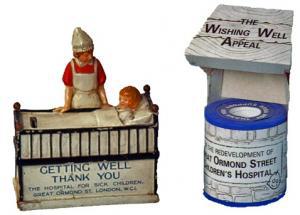
A great deal of help was received from the UK Foreign Office, which helped to establish a global fundraising structure. The international panel split the world into five areas initially and found an expert to advise on the best method of approach and leadership for key countries in those areas. The international appeal was chaired by the deputy chair of the Midland Bank (now HSBC), and former permanent Under Secretary of State for the Foreign and Commonwealth Office and head of the Diplomatic Service. The appeal also received considerable support from the Diplomatic Wives' Association. In this way, a network of fundraising committees was established across the globe, raising more than £1m for the appeal.
The international appeal was launched in April 1988, six months after the UK public appeal began. Once again, The Prince and Princess of Wales provided the momentum with a reception at Kensington Palace. Diplomats' spouses and the directors of companies with activities abroad gave valuable support.
Copies of Marion Allford's book Charity Appeals: The Complete Guide to Success, published in 1992 by J M Dent and Sons in association with the Institute of Fundraising, can be obtained directly fromMarion Allford Associates.


